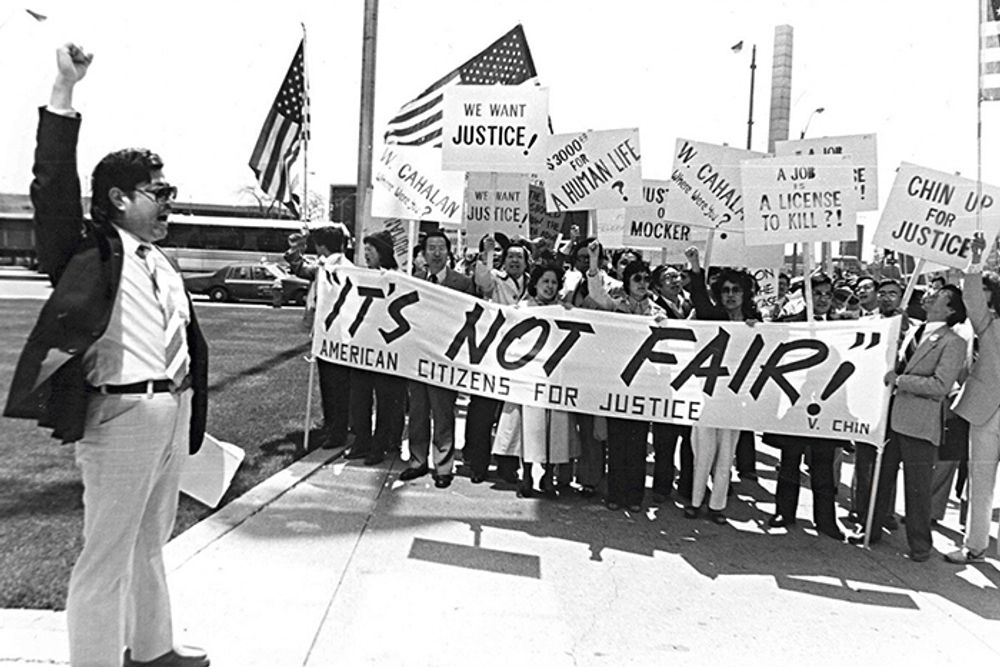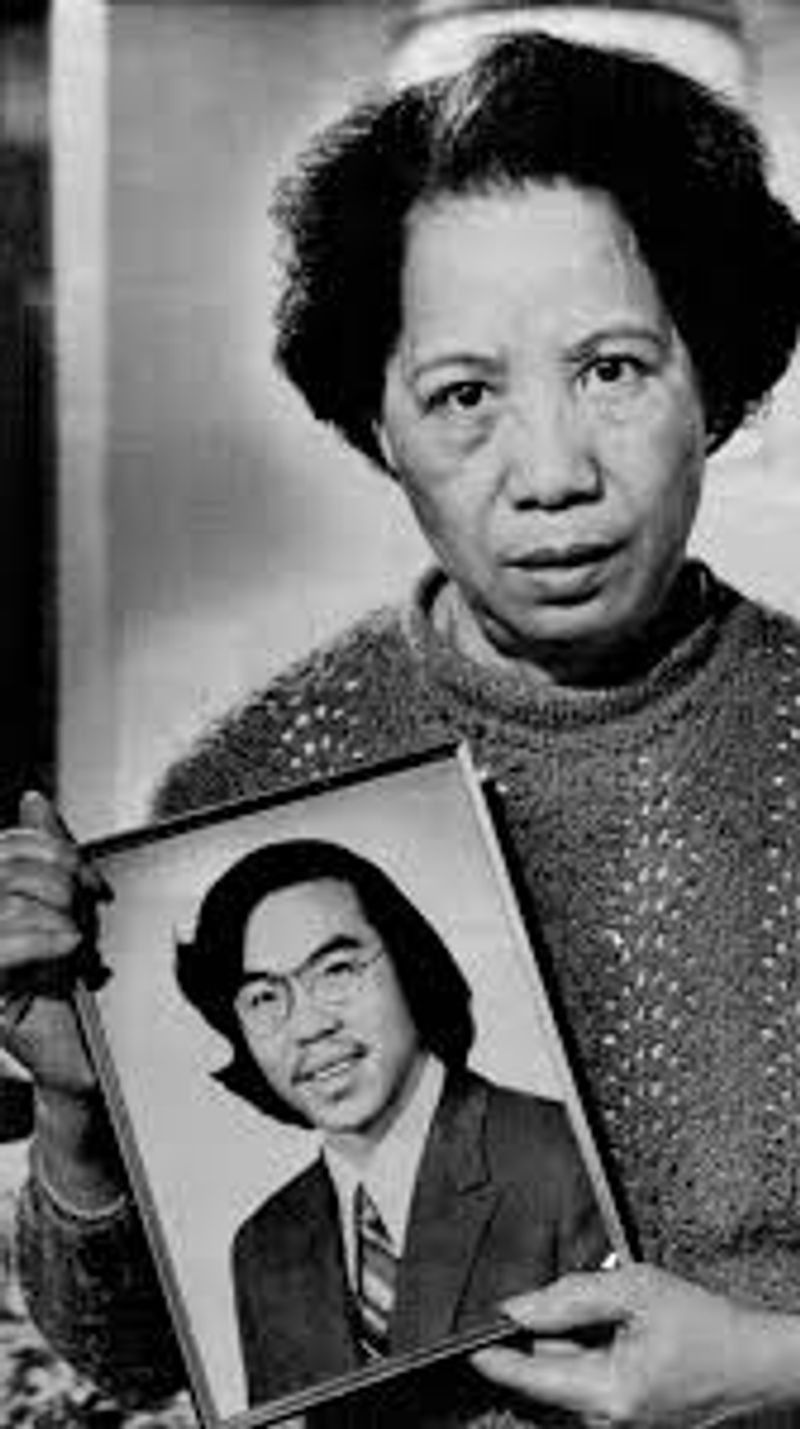Blog
Emil Guillermo: What I learned meditating on my Vincent Chin "retreat"

On my retreat, I went through all my old Chin related interviews, including one with Chin estate executor Helen Zia.
For those who want a real mind jog, I suggest you watch AALDEF’s screening of Christine Choy’s film, “Who Killed Vincent Chin?” If you haven’t seen this 1987 Academy Award-nominated documentary, catch it on Tuesday, June 29th at 6 pm ET.
In honor of the 39th year since the most infamous single hate crime in Asian American history, I’ve spent the last week or so since the 19th, thinking about the Chin case and the writing I’ve done here for AALDEF and on my vlog at www.amok.com.
As I’ve pointed out, the celebration of Juneteenth, the end of the protracted period of slavery in Texas and therefore the U.S., and the beginning of the Vincent Chin case is an historical coincidence that gives us an opportunity to recognize Black-Asian solidarity.
June 19th was the day Chin’s killer Ronald Ebens, a white retired auto worker, struck Chin, then 27, with a baseball bat to the head. Chin remained in a coma until June 23rd, when he was taken off life support.
The path to justice for Chin will make your heart ache. Ebens spent no jail time for the murder and was allowed to plea bargain to second-degree murder. You want an example of abysmal justice? How does three years’ probation, a fine of $3,000, and $780 in court costs sound? For murder in the second degree.
The federal civil rights case was a logical response, and Ebens was convicted to 25 years in prison. But Ebens won an appeal for a new trial, which had a change of venue from Detroit to Cincinnati, and on May 2, 1987, Ebens was found not guilty on the federal charges.
That left the civil case, which was settled in court with Ebens ordered to pay $1.5 million. But since that time, Ebens has used the bankruptcy laws in Nevada (his new home) to avoid paying the estate a dime.
Last week as I pondered the Chin case, Derek Chauvin’s sentence of 22.5 years was handed down. And while many could not believe the light sentence (the max could have been 30 years), there’s nothing light about more than two decades in prison. With the potential of other cases Chauvin is facing adding more time, the fact that a cop is being imprisoned still gives one a sense that justice, though imperfect, was served.
There is no part of the Chin case where one has any sense of justice.
Why it happened the way it did has made e seek meditation.
But here’s an important question for younger Asian Americans and newer immigrants to explore and understand. What were the 1980s like for Asian Americans? The times may have seemed modern. But in terms of American race history, the situation for Asian Americans 40 years ago was still the dark ages. Consider that U.S. immigration laws changed only in 1965, leading slowly to our population growth.
During my meditation on the Chin case, I listened again to my interview with writer Helen Zia, the executor of the Chin estate..
She told me that all these years later, what strikes her the most are the things people don’t bring up about the case.
The human stuff, like the late Lily Chin, Vincent’s adoptive mom. “She died feeling that if she hadn’t adopted him, he’d be alive,” Zia told me. “It’s so sad to me to think about it that way.”

But the human stuff also includes the opposition to the case within the community and the backlash that existed at the time.
“We had civil rights people who said, ‘We’ll support you because Vincent was Chinese and thought to be Japanese, but if he were Japanese, we won’t support because he would’ve deserved it,’ ” Zia said. “I said ‘What? You’re kidding?’ The Michigan ACLU and the Michigan National Lawyers Guild strongly opposed a civil rights investigation because they said Asian Americans are not protected by federal civil rights law. That was something we had to argue.”
Fortunately, the national offices of those legal groups prevailed and forced their state chapters to comply.
“Here were some of the most liberal activist attorneys saying Asian Americans shouldn’t be included under the civil rights law. Vincent was an immigrant. We had to establish he was a citizen, with the implication there might not have been a civil rights investigation if he had not been naturalized. All of this stuff…these were hurdles we had to overcome with major impacts today,” Zia told me.
“Can you imagine if the Reagan White House had followed the National Lawyers Guild’s Michigan chapter and the ACLU of Michigan and said, ‘Why should we look expansively at civil rights? We shouldn’t include immigrants and Asian Americans.’ And at that time, that would include Latinos too, because at that time if you were not black or white, what do you have to do with race? Those were the things people would say to us.”
Zia said a quick telling of the Chin case rarely discusses just how difficult it was to fight for justice. But she says those are the enduring lessons of the Vincent Chin case, because it has contributed to a modern sense of social justice for every American.
“Every immigrant, Latinos. Every American,” Zia said. “Hate crime protection laws now also include perceived gender and disability. It was the Vincent Chin case when we had to argue civil rights was more than black or white.”

Consider also the size of our community back then. Yeah, we’re 23 million now, but in 1980, the Asian American population was just 3.7 million nationwide.
“In the Vincent Chin case, people were incredibly reluctant to become involved,” Zia told me. “They had never gotten involved before. And I think that’s what gets lost in the retelling of the story. Exclusion didn’t end till about 1950, and so what that meant was Asian Americans of every kind, from Chinese to Filipinos, everybody, were pretty much totally disenfranchised till the mid-20th century.”
“So when Vincent Chin was killed 30 years later [in 1982], the communities had… I think of it as stunted growth. There weren’t people running for office. If there were, it was a minuscule number. There weren’t people standing up; we didn’t have advocacy organizations, except for AALDEF in New York and Asian Law Caucus in California, with no pan-Asian advocacy groups in between.”
A right to justice, and a community’s sense of empowerment, was a difficult thing to imagine for many Asian Americans. “Not only did we not have it,” Zia said, “People didn’t even recognize it was something we could have. The idea we all came together with the Vincent Chin case and sang ‘Kumbaya’ and took over and went to the Reagan White House and the Department of Justice and got all these things to happen…that’s a mythology. And I think it’s a disservice to the next generations to think this.”
So that’s what I learned as I pondered the Chin case these past two weeks during my news meditation, my Vincent Chin retreat.
It was a time to understand Black/Asian solidarity. But also a way to understand the evolving solidarity among our entire AANHPI community, including the nearly 7,000 who have been harassed, maligned, and murdered during the Trump-powered scapegoating of the pandemic.
We’re coming together like never before. And that’s good, because we really didn’t when a few brave activists stood up for Vincent Chin.
And it’s a slow evolution. To further your sense of understanding get thee to the AALDEF screening of “Who Killed Vincent Chin?”

Emil Guillermo is an independent journalist/commentator. Updates at www.amok.com. Follow Emil on Twitter, and like his Facebook page.
The views expressed in his blog do not necessarily represent AALDEF’s views or policies.
Read Emil's full bio →